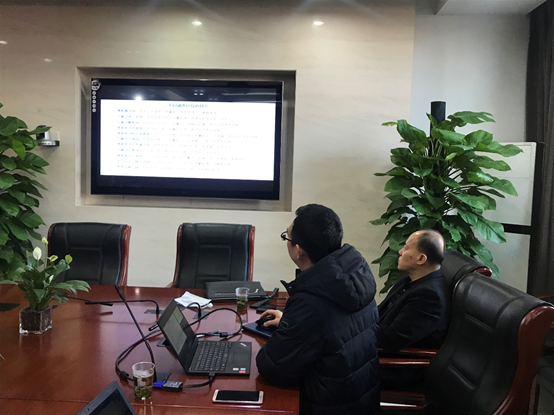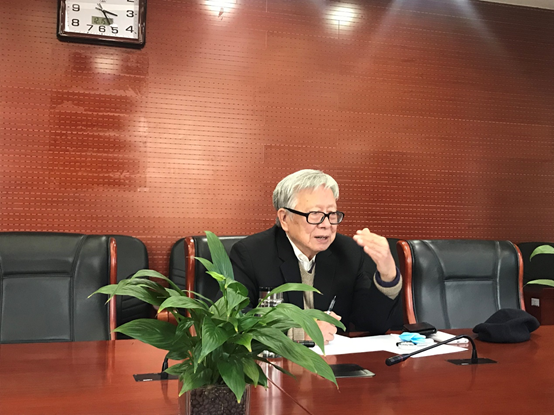Recently, members of the scientific expedition team to Lop Nur and its surrounding areas went to the Chinese Academy of Geological Sciences and reported on the results of the first phase of the scientific investigation conducted in October 2020 to Mr. Lu Yaoru, an academician of the Chinese Academy of Engineering. Academician Lu is very concerned about this scientific investigation. He fully affirmed the results of the first phase of the scientific investigation, and at the same time, put forward further suggestions on the study of the macro resources and ecological environment of Lop Nur and surrounding areas.
The scientific expedition project of biodiversity investigation and monitoring in Lop Nur and its surrounding areas was initiated by the China Biodiversity Conservation and Green Development Foundation (CBDGDF). The project plans to investigate and study in detail the historical changes and succession laws of the ecosystem in Lop Nur and its surrounding areas from the three levels of species, genes, and ecosystems in the context of global warming from 2020 to 2030, to explore the current and future trends in the restoration of the ecological environment in the region and provide scientific support for the sustainable development of China's western region and the decision-making of major projects.
From October 9th to October 18th, 2020, under the organization of CBCGDF, Aerospace Information Research Institute, Chinese Academy of Sciences and other scientific research institutes participated in the first phase of scientific expedition in Lop Nur and its surrounding areas completed field scientific investigations in autumn and winter. The investigation was divided into hydro-ecological group, soil and microbial group, plant group, fish and phytoplankton group, and terrestrial vertebrate group. The expedition lasted for 10 days, around the Kongque River, Tarim River, Cherchen River Basin, and the ear-shaped depression-the Lop Nor dried basin, jointly investigated 41 field sampling areas.
Team leader Dr. Lu Shanlong made a summary of the results of this scientific investigation. Up to now, the scientific expedition team has completed the survey of the macroscopic water resources status of the three major inland river basins in southern Xinjiang and collected 269 soil and microbial samples; In terms of biodiversity surveys, 381 plant samples, 27 families, 53 genera and 74 species of seed plants, 13 species of fish, 7 phytoplankton species, and 43 species of terrestrial vertebrates were investigated and recorded. Among them, there are 36 species of birds and 3 species of wild animals under national second-level protection, namely kestrel, Hen harrier and yarkand hare.
After listening carefully to the results report, Academician Lu provided supplements on the background of large-scale scientific research projects related to water resources ecological investigation and utilization in Northwest China. On the basis of this scientific research project organized by CBCGDF, Academician Lu suggested that besides paying attention to the regional biodiversity status, research can also be carried out from a more macro perspective. For example, comprehensive research on the matching status of local water and soil resources, in-depth understanding of organisms and their attached water and soil environmental characteristics, especially changes in groundwater. On this basis, we will study the suitability of biodiversity and its potential to support the sustainable development of the local economy.
“In the context of global warming, in addition to considering the impact of climate change on the impact of ecological changes in Northwest China, it is also possible to comprehensively consider the impact of large-scale water conservancy projects across the country (such as the Three Gorges Project) on the distribution pattern of water resources and water vapor,” Academician Lu is very confident about the 10-year scientific research in Lop Nur and surrounding areas. He suggested that future scientific investigations should consider increasing the research power of groundwater and water chemistry, so that the country can invest the least and achieve the best benefits.



(Photo credit: CBCGDF)
Original Chinese article:
http://www.cbcgdf.org/NewsShow/4854/14700.html
By / Maggie
https://www.paypal.me/CBCGDFChina
http://www.cbcgdf.org/English/ConfirmDonaTion/0.html


(Please indicate "I read CBCGDF" in the payment notes, thank you!)
